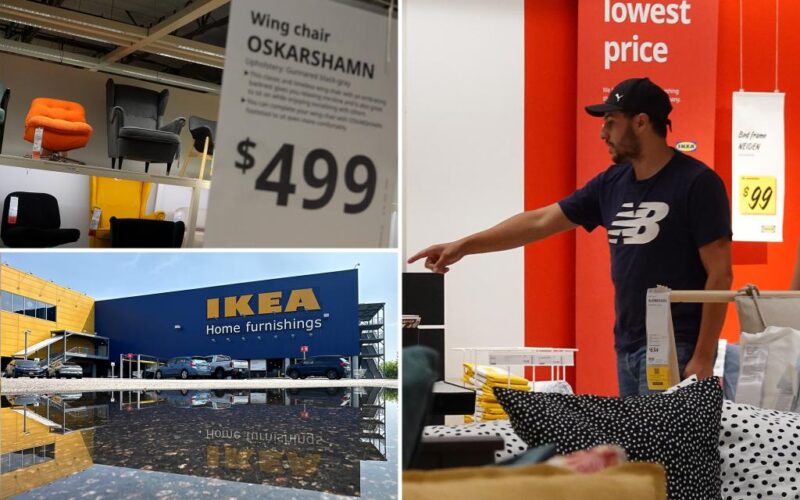IKEA has been forced to hike prices on some big-ticket items as companies start to pass along President Trump’s tariffs after months of eating the added costs, according to a report.
Over the past few years, the home goods retail chain has slashed prices on everything from bookshelves to bed frames in an attempt to win over customers battered by sticky inflation.
But the president’s tariffs – including taxes on furniture that took effect this week – have squashed that price-cut path.
“Our ambition is to continue lowering prices,” Tolga Öncü, retail manager at Ingka, which operates a vast majority of global IKEA stores, told the Wall Street Journal. “But of course in the world we live in sometimes…that becomes very difficult or even impossible at some point.”
“We have to adapt and pass on parts of the cost increase to the customers,” he continued.
IKEA did not immediately respond to The Post’s request for comment.
Sales at all IKEA stores – including those owned by Ingka and other franchisees – dropped 1% to €44.6 billion, or about $52 billion, in the year ended in August. Sales volumes jumped 3%.
Some higher price tags have already made their way to shelves.
IKEA’s Uppland sofa now costs $899, up from $849 in August, according to the report. It hiked the price of a three-piece oak bedroom set to $1,049, compared to just $959 two months ago.
Just a few months ago, IKEA vowed to double down on its aggressive price-cut campaign.
Low costs are central to IKEA’s “Democratic Design” – an idea that all of its products should be designed to be practical, high-quality, attractive and affordable.
Those values likely come from the company’s late founder, Ingvar Kamprad – a Swedish billionaire who continued to fly economy, reuse tea bags and drive an old Volvo even after his business took off. He died in 2018.
“I’m stingy and I’m proud of the reputation,” he once said.
But this week, a fresh slew of tariffs took place on goods central to IKEA’s business.
Trump on Tuesday slapped a 10% rate on wood and timber, 25% on upholstered furniture and 25% on kitchen cabinets and bathroom vanities. These rates are set to rise higher at the start of next year.
The US is one of IKEA’s largest markets. Only about 15% of what IKEA sells in the US is manufactured domestically, making it especially vulnerable to the new tariffs.
“We can’t stay immune to absorb all the costs ourselves,” Öncü told the Journal. “But the big work sits in finding ways to lower the prices.”
IKEA sources all of its kitchen cabinets sold in the US from American manufacturers, so it’s spared from the new tariff on these items.
But it has been trying to build out its network of US suppliers as it faces added costs on upholstered furniture imports, including sofas and chairs.
The company has been looking to source other products, like mattresses, from domestic suppliers.
“These tariffs are confirming we are on the right track when it comes to exploring possibilities to produce more in the US,” Öncü said.
IKEA isn’t the only retail company to start passing along tariff-related costs. Huge retailers like Walmart and Target have started raising prices on some items, and warned of more hikes to come.
US consumer inflation came in slightly hotter at 2.9% in August, according to the most recently available government data. The Bureau of Labor Statistics has delayed its inflation report release this month due to the government shutdown, which entered its sixteenth day on Thursday.
But Goldman Sachs economists have warned that consumers will bear the brunt of Trump’s tariffs once they finish working their way through the economy.
US consumers will ultimately pay 55% of tariff costs, but this effect has been delayed as businesses eat a larger share of the costs as they aim to raise prices gradually, the economists said in a note last week.








